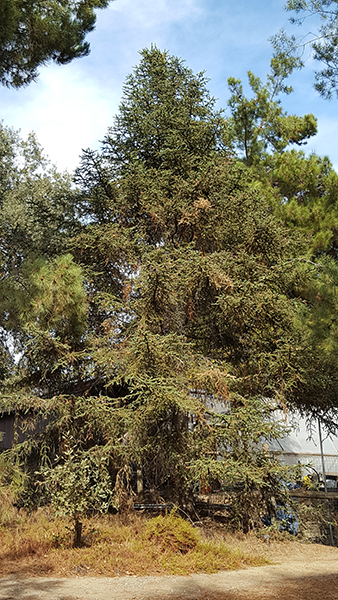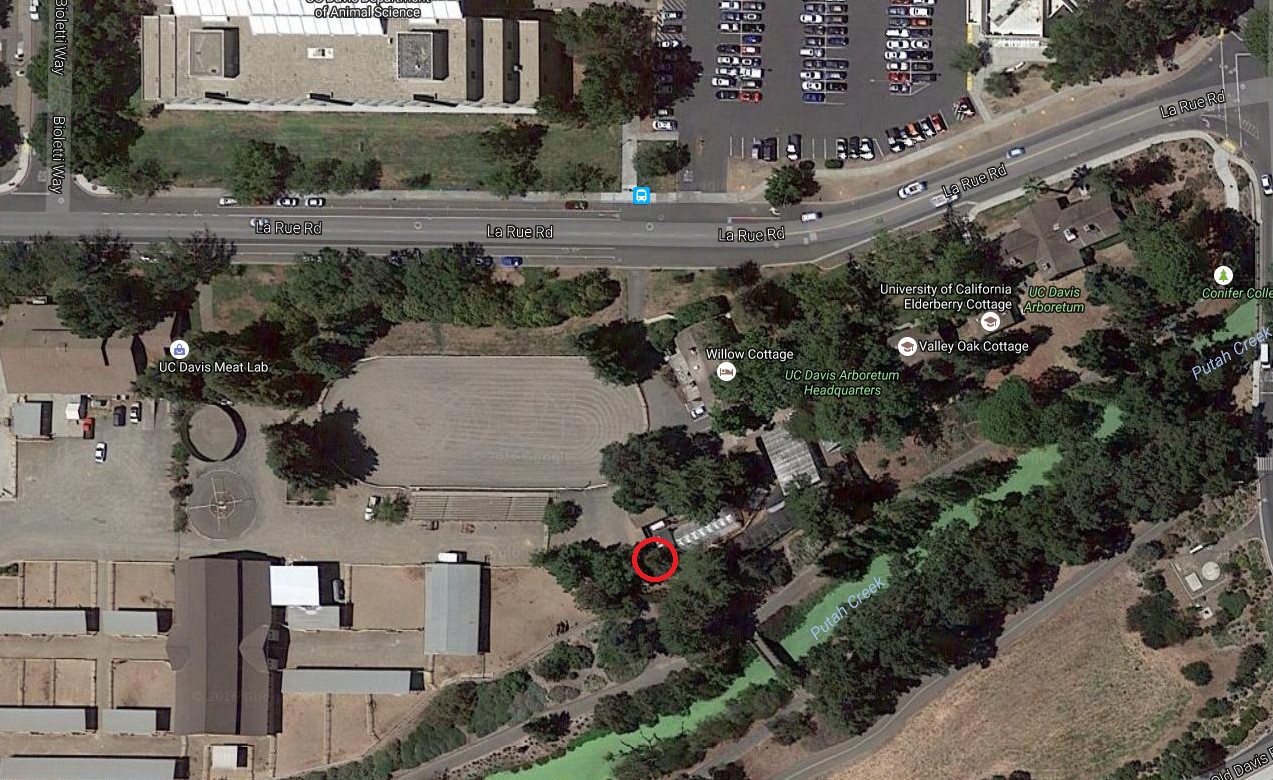
Introducing our one and only Spanish fir
by Denise Castro
Environmental Horticulture and English major
UC Davis Arboretum curatorial intern

Spanish fir (a.k.a. hedgehog fir), Abies pinsapo
Common Name: Spanish fir (a.k.a. hedgehog fir)
Scientific Name: Abies pinsapo
Family: Pinaceae
What’s so special about the Spanish fir?
To start off, there’s currently only one Spanish fir in the UC Davis Arboretum and it can be found in our conifer collection, behind the Arboretum Headquarters.
This Spanish fir was acquired from the USDA Forest Service in 2001 and it’s one of the oddest specimens in the conifer collection. It also happens to come from a long line of ancestors that probably existed before any human ever did, an ancestry that has somehow managed to survive one of the harshest events on the planet—the Ice Age—so if you ever get the chance, definitely stop by and check it out!
But before I dive into the cool stuff, let’s start off with some basics.
Who discovered the Spanish fir and when?
That would be Pierre Edmond Boissier, a Swiss botanist, in 1838. He was highly interested in Spanish flora and he discovered quite a few species, which he mostly noted in his journal: Voyage botanique dans le midi de l’Espagne pendant l’année.
Where exactly is the Spanish fir from?
The species we have in the Arboretum is specifically native to southern Spain. They can be found at high elevations on the mountains of the Sierra de Grazalema, the Sierra Bermeja, and the Sierra de las Nieves (near the beautiful mountaintop city of Ronda). The Spanish fir also happens to be the national tree of Andalusia (a region in Spain that has been split into eight provinces). Okay, that’s dandy and all, but now what?
Why would the UC Davis Arboretum choose to showcase this one in particular?
The Spanish fir is listed in the IUCN Red List as endangered in its natural habitat. (IUCN stands for International Union for Conservation of Nature and manages an extensive list of organisms that are at risk for global extinction.) This species is currently protected at a regional level under Spanish law, but the population is still decreasing due to a variety of factors, including, but not limited to: deforestation, habitat degradation, lack of gene flow (meaning there’s a lack of genetic diversity among the population, which makes the population susceptible to diseases), and forest fires.
Which one is it?
When you visit the Arboretum you notice there are quite a few conifers in the Arboretum; how will you know when you’ve found this Spanish fir? The Spanish fir itself is an odd-looking specimen and there’s a reason it’s also known as the hedgehog fir. The blue-green needles are stiff, short, and radially surround the branches (see photo), but the they aren’t prickly like a cactus, even though it looks pretty dangerous. Actually, the needles bend easily and they feel almost like a succulent (or like a hedgehog).
Why needles?
Conifers are well-known for their adaptive capabilities in regions that few plants can tolerate, especially in colder and drier areas. Needles help retain water (thanks to the waxy coating) and (along with the conical shape of the tree) keep the tree from freezing, because snow simply slides down the sides

Where are the cones?
The fir is monoicous, so it has both male and female cones. The male cones are actually pretty easy to find on the tree, because they last much longer than the females (which fall apart after reaching maturity in order to release the seeds). The male cones are small and reddish, while the females are much larger and much greener until they reach maturity (although I’ve never had the chance to see any myself, so there’s a challenge for y’all).
How old is this species?
Well, if you’re still not amazed by the fantastic structure of this tree and/or by my (not to brag) exceptional photography skills, then just bear with me, it gets better. Because, the Spanish fir is actually ancient. How ancient am I talking about here? I’m talking tertiary-era ancient. That means this species is considered to be at least two million years old. Two. Million. At least. And guess what? This hardy conifer is one of the very few species that survived through the last major ice age! Which, after considering the manner that conifers retain water and prevent damage from snow, makes sense. But just imagine, every time you walk by the Spanish fir in the Arboretum, you’re actually walking by the descendant of an ancestry that’s somewhere from two to sixty-five million years old!
So far, the oldest known live specimen, The Escaleretas Spanish fir which resides in the Sierra de las Nieves Nature Park is over 350 years old, over 86 feet tall, and the circumference of its trunk is around 16 feet! That’s older than the Revolutionary War, nearly as tall as a six-story building, and wide enough that it would take at least three adults to reach around the trunk. (If any of y’all ever have the opportunity to visit, definitely send pictures my way!)
Want to know more?
Conifer Society
The Gymnosperm Database
IUCN Red List
Missouri Botanical Garden
RHS (for Spanish fir ‘Glauca’)
Further Reading
Linares, J.C. 2011. Biogeography and evolution of Abies (Pinaceae) in the Mediterranean
Basin: the roles of long-term climatic change and glacial refugia. J. Biogeogr. 38:619–630.

